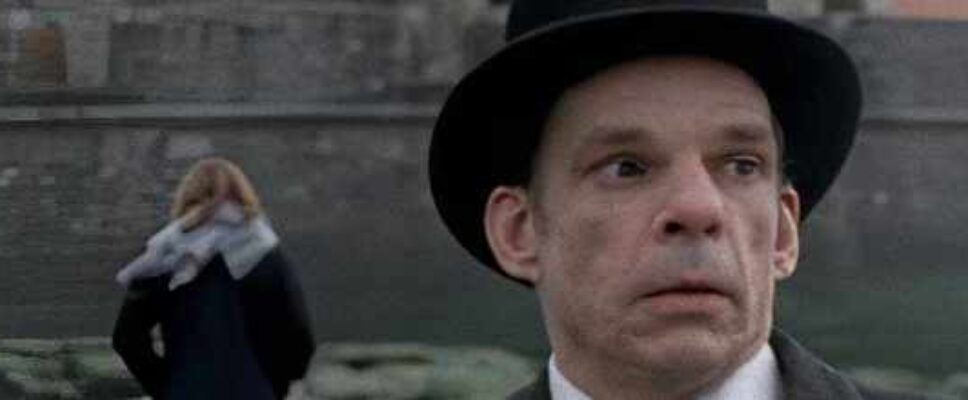Teresa Reviews “The ABC Murders” (2009)
Teresa Reviews “The ABC Murders” (2009) and found it a faithful adaptation of the novel, but with several French twists.
Les Petits Meurtres d’Agatha Christie, Season One
Episode: Les Meurtres ABC
Source: Amazon
Fidelity to text: 3 stranglers
![]() Poirot and Hastings are gone, replaced by French policemen in a police procedural. The murderer’s different too!
Poirot and Hastings are gone, replaced by French policemen in a police procedural. The murderer’s different too!
Quality of film on its own: 4 stranglers
![]() Surprisingly amusing while still being true to the text and the seriousness of murder.
Surprisingly amusing while still being true to the text and the seriousness of murder.
Read more of Teresa’s Agatha Christie movie reviews at Peschel Press.
Also, follow Teresa’s discussion of these movie on her podcast.

If we needed to move a film up because of one of the annotation projects, we did.
Eventually, we got to roughly watching them in the order in which they were released. Except when we didn’t. Which brings me to Les Meurtres ABC, the French TV adaptation of The ABC Murders. It’s part of the Les Petits Meurtres d’Agatha Christie series. We saw an episode (Towards Zero) from the second season because I wanted to watch a faithful adaptation of that classic novel. Alas, I was disappointed again.
That experience made me decide to be more systematic. Bill and I went back to the first season of Les Petits Meurtres and watched the first episode. You’ll need some explanation, dear reader, if you’re going to watch French TV’s take on Agatha. They filmed three seasons (to date). The seasons are of varying lengths and have nothing to do with the year, unlike American TV. Instead, each season — however long it is — has a different cast and takes place during a different era. Thus, season 1 (2009–2012) has eleven episodes and takes place in the mid-1930s. Season 2 (2013–2019) has twenty-seven episodes and takes place from 1959 to the early 60s. Season 3 (2021–to date) is airing in France and it takes place in the mid-70s.

The other commonality seems to be — so far! — that each season has less to do with Agatha Christie than the previous one. Based on what I’ve seen and some online research, season one hews relatively close to the text, other than turning them into police procedurals and removing whoever did the detecting. Season two plays fast and loose with the source material, preferring to focus on the characters’ sex lives and total lack of interest in policework other than for comic effect. Season three tosses Agatha out completely and writes its own scripts.
So I went back to the beginning, where I should have started all along.
And it was pretty good!

Larosière’s Hastings substitute is his hapless junior officer, Inspector Émile Lampion. Lampion isn’t as dopey as Hastings can be. He’s earnest, dogged, and loyal to his boss. Except when he’s beguiled by one of the aforementioned young Turks.

He’s also not above seducing Lampion, introducing him to the joy of nude postcards of studly young men via that marvel of new technology, a stereoscope. Think of a vintage View-master, with dirty pictures instead of scenic wonders. Lampion thinks he’s found a kindred soul, although he feels guilty because of his disloyalty to Larosière. For his part, Duval enjoys using his younger subordinate but it doesn’t mean a thing; not when he can use Lampion to get what he really wants.
Duval’s greed and showboating gets him killed by the ABC murderer and no one mourns him.
The ABC Murders still take place. There’s still a series of taunting letters, mailed first to Larosière and then, when he’s ousted for failing to solve the case, to Duval. Custe is still a hapless soul, struggling to overcome his permanent injuries from Verdun. His landlady’s daughter, Lili, is very kind to him.
If you’re familiar with the novel, you’ll assume you know where it’s going and then the rug’s pulled out from under you. Duval arrests Megan because she must have murdered her hated fiancé-stealing sister. He explains away how and why she murdered a tramp by pouring gasoline over him and setting him afire.

Custe is arrested. He’s sure he’s guilty, but he can’t explain why or how. Larosière, back on the case because Duval got his throat slashed, is suspicious because things don’t add up. I’ll assume policework went on in the background even though we didn’t see it. He arranges with Lady Clarke to do the Poirot in her drawing room and it’s at that point everything changes.
She did it! In cahoots with her lover, the doctor! Who’s also Custe’s doctor, Betty Barnard’s doctor, and the tramp’s doctor! Her doctor is the connective tissue between the victims. And they did it because she’s angry at her husband for stealing the credit for her scientific genius, pursuing hot, blonde secretaries, taking over her chateau and money, and in general being a bad husband.
Her lover, the doctor, committed the murders and very cruel, personal, and intimate they were too. Strangling, lighting someone one fire, bludgeoning, throat-cutting, setting up Custe as a pasty for the guillotine, and, when they’re unmasked, he injects Lady Clarke with a killer dose of morphine to save her from justice.
This type of ending is described by Alfred Hitchcock: as long as the audience buys it in the theater and reality doesn’t set in until after they’ve walked outside, the ending works!
That’s what happened to us. As soon as we began discussing the film during our nightly walk, we saw the flaws. But other than the flawed ending, this adaptation fires on all cylinders.


